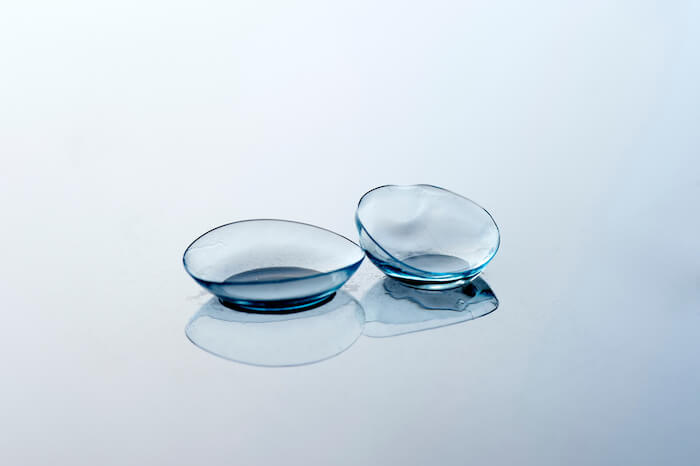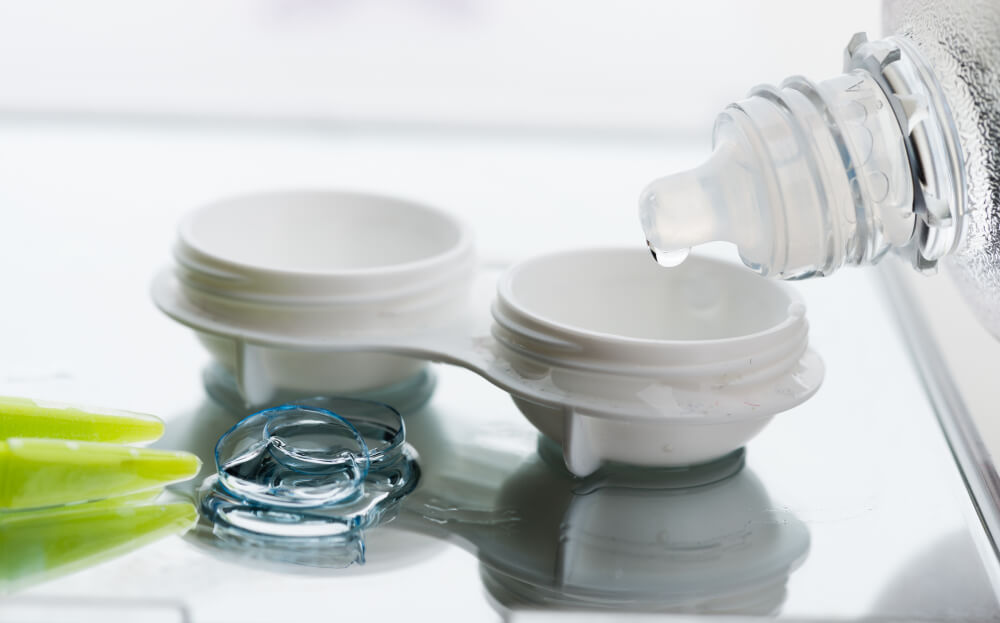

Contact Lens
Wearing contact lenses are more comfortable, more convenient, and healthier than ever before! New contact lens designs like soft bifocal lenses and astigmatic (toric) soft lenses make contact lens wear a reality for a wide variety of people. Wetter, more comfortable, materials help previous contact lens “drop-outs” wear contacts happily again. Contact lenses are available in terrific colors to brighten your eyes’ appearance, as well as specialized colors to improve sports performance!
With all the contact lens choices available, it’s especially important to work with a doctor who will fit you with the best lenses for you as an individual. And because contact lenses interact directly with delicate eye tissues, it’s important for contact lens wearers to have annual eye examinations to detect problems before they threaten your successful contact lens wear, your eye health, and your vision.

Contact Lens Fitting
One size does not fit all when it comes to contact lenses. Your eye doctor will need to take measurements to properly fit your contact lenses.
Contact lenses that do not fit properly could cause discomfort, blurry vision or even damage the eye. The contact lens fitting is done in conjunction with your comprehensive eye exam.

Types & Brands
We fit:
We carry:
Regardless of how often or how long you wear your contact lenses, your eyes should be examined at least once a year to make sure your eyes remain healthy and tolerant of contact lens wear.
Yes. Lenses specially designed to correct astigmatism are called “toric” lenses. Most toric lenses are soft lenses. Toric soft lenses have different corrective powers in different lens meridians, and design elements to keep the lens from rotating on the eye (so the varying corrective powers are aligned properly in front of the different meridians of the cornea).
If you have dry eyes, the first step is to treat the condition. This can be done in several ways, including artificial tears, medicated eye drops, nutritional supplements, and a doctor-performed procedure called punctal occlusion to close ducts in your eyelids that drain tears away from your eyes.
Once the dry eye condition is treated and symptoms are reduced or eliminated, contact lenses can be tried. Certain soft contact lens materials work better than others for dry eyes. Also, GP lenses are sometimes better than soft lenses for dry eye sufferers, since these lenses don’t dry out the way soft lenses can.
Yes. Today, there are many designs of bifocal and multifocal contact lenses to correct presbyopia. Another option for presbyopia is monovision. This is wearing a contact lens in one eye for distance vision and a lens in the other eye that has a power for near vision.
YES. Before you are fitted with contact lenses, a comprehensive eye exam is performed. In this exam, your eye doctor determines your prescription for corrective lenses (just a glasses prescription at this point) and checks for any eye health problems or other issues that may interfere with successful contact lens wear. If all looks good during your eye exam, the next step is a contact lens consultation and fitting.
If you are interested in wearing contact lenses, call our office to schedule a consultation. Even if you’ve been told you’re not a good candidate for contacts because you have one of the above conditions or for some other reason, we may be able to help you wear contact lenses safely and successfully.
Just as one shoe size doesn’t fit all feet, one contact lens size doesn’t fit all eyes. If the curvature of a contact lens is too flat or too steep for your eye’s shape, you may experience discomfort or even damage to your eye.
1692 30th Street
Boulder, CO 80301
9835 S. Parker Road
Parker, CO 80134
12450 York Street
Thornton, CO 80241
4 Garden Center, Suite 100
Broomfield, CO 80020
10001 N. Washington Street
Thornton, CO 80229